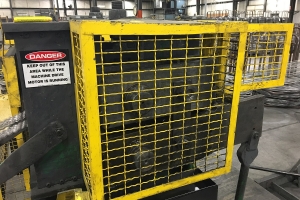OSHA inconsistent on lockout interpretations
An OSHA directive on lockout states, “Setting up is not considered utilization of a machine or equipment and is classified as servicing and/or maintenance, rather than normal production operations.”
The significance of that statement is that lockout must be applied to set up (because it is classified as servicing or maintenance) regardless of whether that is the best way to protect the worker involved. And, as in many other areas, OSHA has been ramping up enforcement.
You’ve got to be kidding me. That’s like saying a mechanic must lockout the ignition switch when tuning up my car engine because it’s service and maintenance. By the way, it is service and maintenance of my vehicle, but does OSHA understand that you must have the engine running to set the timing? This is not a safety “shortcut.” It is a requirement of the task — just like the utility worker who must climb a pole in all kinds of bad weather and has potential exposure to very high voltage. Hello OSHA — welcome to the real world of work and risk.
If OSHA maintains its 40-year focus on hazards without moving to risk assessment, we’re all in for a lot of continued anxiety. Forget the impact on Santa Claus (see Jim Stanley’s Dec 23 post on how “OSHA nearly killed Christmas”), employers will have to sprinkle pixie dust to stay in business.
Power often needed for tooling changes
Employees often need power on to make tooling changes on machines like plastic injection molding machines.
Just like tuning an auto engine, this is not a shortcut but a requirement of the task. Small molding machines typically pose very low risk because employees stand on the side of the machine and are protected by passive controls (i.e. control reliable safeguards).
Hello OSHA, have you ever heard of passive controls, the holy grail of good safety design? A passive control is something like an airbag. It works without human interaction. In the case of machines, it might be an interlocked barrier that prevents hazardous motion but still allows necessary power to perform the tool change.
Oh yeah, I forgot, OSHA calls most tool changes “setup.” And because they consider setup to be service and maintenance, it automatically requires lockout. Good grief. This could be a Charlie Brown movie or the ultimate catch Catch-22.
Other safe ways to change tools
On some machines the task of changing tools might be safely performed using engineering controls and a similar task on another machine might require full lockout of the primary energy source.
By the way, with the exception of worrying about compliance, I don’t care if you call it setup or tool change as the term does not define the risk. In many cases, locking out would actually increase risk.
If OSHA’s thinking prevails, we won’t need standards that provide requirements for control reliable safeguards because the answer will always be “lock it out.” The problem, of course, will be trying to enforce what is a ridiculous rule.
Workers are smart people, and they know when management has imposed a rule that won’t let them do the task. That’s when they don’t lock out – and the machine may not have the safeguards that make the task inherently safe. Remember, these are not shortcuts but the situations where you need power to do something and risk assessment shows the work to be safe.
In the aforementioned CPL, page 10 states, “Tagout devices may be used on energy-isolating devices that are capable of being locked out if the employer develops and implements the tagout in a way that provides employees with a level of protection equal to that achieved through a lockout system.”
Time for a change by OSHA
OSHA’s exemption is inconsistent with its strident demand for locks in certain industries, and the exemption recognizes only part of the problem. The protection offered by lockout or tagout deals only with someone restarting the operation that could result in hazardous motion. It’s time for OSHA to provide an exemption for tasks requiring power where the work is performed safely using control reliable safeguards.
No wonder workers often think safety people are goofy. Oh, did I mention that many companies would simply go out of business, or at a minimum discontinue certain manufacturing processes (away go those jobs). Come on OSHA – get with it.
Task-based risk assessment as defined in the ANSI B11, family of general industry safety standards, will give you the answers you need to define acceptable risk – and allow the work to be performed safely. Unfortunately, OSHA’s outdated hazards-based approach falls miserably short. Please contact FDR Safety if you have questions.



1 Comment
I am a carpenter sub. We employ 6 carpenters.
We have recently been visited by osha on two of my job sites.
I am so sick of osha thinking they know the best way for us to be safe on the job.
When you ask a rep from osha about a rule, most times they can’t answer or their interperation of it is different from another person in a different sector.
Or one trade is ok to use a method , but the other one can,t.
Now what the heck is that?!!!
Osha is way inconsistent and they should really be getting feed back from current workers on site every day.
Not just UNION memebers who in return loddy OSHA